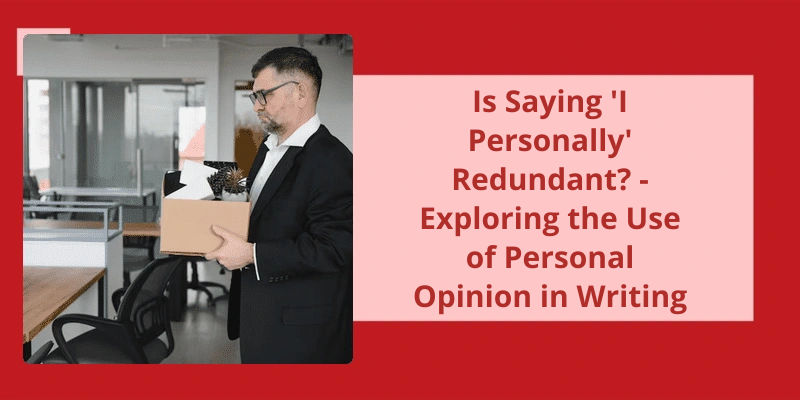Whether used in conversation or written communication, these structures can effectively predict an outcome or express hypothetical situations. The first conditional, particularly, has found common use in advising or giving suggestions. By using an 'if' clause in the present tense, one can suggest an action that could possibly lead to a favorable outcome. Properly crafting this structure involves grammar rules that require a thorough understanding. While some may deem it complex, mastering conditional sentences promises precision in delivering advice or predictions. Therefore, it’s essential to learn the intricacies of this structure, particularly the first conditional, to achieve effective communication in all scenarios.
What Is the First Conditional for Advice?
The first conditional is a grammatical structure used to express ideas about situations that may happen in the future. This structure is composed of two parts: the if-clause and the main clause. The if-clause is used to express a condition, and the main clause is used to express the consequence of that condition. When we use the first conditional to give advice, we use the modal verb “should” to indicate the correct action to take.
For example, we can say “If you study hard, you should pass the exam”. In this sentence, the if-clause expresses the condition of studying hard, and the main clause expresses the consequence of passing the exam. The use of “should” indicates that passing the exam is the correct thing to do. The sentence implies that the person receiving the advice should aim to study hard in order to achieve the desired outcome.
Another example of using the first conditional for advice is “If you want to lose weight, you should exercise regularly”. Here, the if-clause expresses the condition of wanting to lose weight, and the main clause expresses the consequence of exercising regularly. The use of “should” indicates that exercising regularly is the correct thing to do to achieve the desired outcome of losing weight.
For instance, “If you want to improve your writing skills, you should read more books” can be used to suggest a specific action that would lead to an improvement in writing skills. The sentence implies that the person receiving the advice should prioritize reading more books to achieve the desired outcome.
The Difference Between the First and Second Conditional for Giving Advice.
The first conditional is used to give advice based on a likely outcome in the future, while the second conditional is used to give advice based on an unlikely or hypothetical situation.
Now that we’ve discussed the various ways in which the second conditional can be used, let’s explore it’s effectiveness in giving advice. While it may not be the most common method of dispensing advice, the second conditional can be an effective tool when used appropriately. So, what’re some scenarios where the second conditional might come in handy? Let’s take a look.
Do We Use Second Conditional to Give Advice?
When we use the second conditional to give advice, we’re using an imaginary situation to provide guidance. For example, if someone says “I don’t know what to do about my job,” you could respond with, “If I were you, I’d start looking for other opportunities.”. This advice is based on a hypothetical situation, where you put yourself in the persons shoes and imagine what you’d do in their position.
Another way to use the second conditional to give advice is by giving a reason why you cant do something. For instance, if someone asks you to pick them up from the airport, but you cant because you’ve a meeting, you could say, “If I didnt have this meeting, I’d be happy to pick you up.”. This communicates that you arent saying no because you don’t want to help, but because you genuinely cant make it.
Hypothetical questions are also a great way to use the second conditional. For example, if you want to gauge someones opinion on a controversial topic, you could ask, “If you could change one thing about society, what would it be?”. This allows the person to imagine a world where things are different, and gives you insight into their values and beliefs.
Finally, the second conditional can be used to generally imagine that your life is different. For example, if you’re unhappy in your current job, you could say, “If I’d gone to college for something else, I might be in a different line of work.”. This allows you to consider what life could be like if you’d made different choices in the past.
Overall, the second conditional is a powerful language tool that allows us to imagine different scenarios and provide advice based on hypothetical situations. It’s also a great way to ask thought-provoking questions and consider what life could be like if we’d made different choices. So the next time youre looking for a way to communicate something that isnt quite real, consider using the second conditional.
Examples of Common Situations Where the Second Conditional Can Be Used to Give Advice
The second conditional can be used to give advice in hypothetical situations where the outcome is unlikely to happen. Common examples of such situations include giving career advice, relationship advice, or travel advice. For instance, “If I were you, I’d take a gap year before starting college to travel and gain life experience.”
Now that we’ve established the structure of the second conditional, let’s explore some examples where it’s used in giving advice.
Which Conditional Is Used for Advice?
This structure is an example of a hypothetical or unreal conditional, where the situation described isn’t currently true or possible. It implies a hypothetical scenario that could have different outcomes depending on the action taken. It’s commonly used in situations where the person giving advice is providing an alternative course of action to the one currently being taken.
For example, if a friend is struggling to study for an exam, you might say “If I were you, Id set a schedule and stick to it,” implying that this could improve their situation. Another example might be if someone is considering quitting their job, you could say “If I were you, Id weigh the pros and cons before making a decision,” implying that it may be helpful to take a step back and consider the consequences of quitting.
While the second conditional may seem like it’s simply a way to give advice, it also has a function of indicating that the situation being discussed is hypothetical and may not currently be true. This means that the advice being given may not be applicable to everyones situation, but rather is dependent on the specifics of the hypothetical scenario. However, it’s still a useful structure for giving advice and can be adapted to fit a variety of situations.
It’s important to remember, however, that there are other types of conditionals that may be more appropriate for giving advice in certain situations. For example, the first conditional, which describes real or likely future situations, could be used to suggest a course of action that’s a high probability of success. Likewise, the third conditional, which describes past or unrealized hypothetical situations, could be used to provide feedback or suggest changes that could have improved a past situation.
Ultimately, the use of the second conditional for giving advice is a common and effective strategy, but it shouldn’t be the only strategy used. It’s important to consider the specific situation and use the type of conditional that’s most appropriate for the context. By doing so, the advice given will have the greatest impact and help others navigate the challenges they’re facing.
Source: How to use conditionals in English: zero, first, second, third …
Now that we understand the basic structure of the first conditional and it’s common usage, let’s explore the possibility of using it to give advice. While it isn’t a commonly used method, there are situations where it can be effective. Let’s dive deeper into this topic and see how the first conditional can be used to offer helpful advice to others.
Can We Use First Conditional to Give Advice?
This is followed by a clause in the future simple (will + base form of verb). For example, “If you study hard, you’ll pass the exam.”. However, using first conditional to give advice can be more complex than simply stating a consequence of an action. It requires understanding the context and the possible outcomes of that action.
For instance, lets say a friend is contemplating quitting her job to start a business. The advice giver could say, “If you quit your job, you’ll be able to focus on your business full-time.”. However, this advice doesn’t take into account the possible financial risks and the fact that the business may not succeed.
For instance, if someone is struggling with anxiety, telling them, “If you stop worrying, you’ll feel better,” may not be helpful. They may need more specific coping mechanisms or therapy to address their anxiety.
Another aspect to consider is the language used in giving advice. While the first conditional may be appropriate in some situations, using imperatives or softer language may be more effective. For example, saying “You should consider the possible risks before quitting your job,” or “Have you thought about seeking professional help for your anxiety?” may be more respectful and empathetic.
While the first conditional can be used to give advice, it requires careful consideration of the context, probability of outcomes, emotional impact, and language used. The goal of giving advice should always be to support and empower the person receiving it, rather than simply stating a consequence. By taking all these factors into account, we can give helpful and respectful advice.
Present real conditional sentences are used to describe a situation in the present or future that may or may not happen, and it’s corresponding result. These sentences are constructed using an “if” clause, followed by a present tense verb, and a result clause that uses “will” or “can” in it’s future tense. Let’s take a look at some examples of present real conditional sentences.
What Are 3 Present Real Conditional Sentences?
Present Real Conditionals are a type of conditional statement that’s used to describe events or situations that may happen in the present or future, based on certain conditions being met. These conditions are usually hypothetical and depend on the actions or decisions of the speaker or someone else.
Firstly, if I go to a friends house for dinner, I usually take a bottle of wine. This sentence is based on the condition that the speaker is invited to a friends house for dinner. The implication is that if the speaker does go, they’ll take a bottle of wine with them. This condition is hypothetical and is dependent on the speakers decision to go to their friends house or not. This statement also reflects a common social custom where a guest brings a gift or something to contribute towards the meal.
Secondly, when I’ve a day off from work, I often go to the beach. This sentence is based on the condition that the speaker has a day off from work. The implication is that if the speaker does have a day off, they’ll often choose to spend it at the beach. This condition is also hypothetical and is dependent on the speakers work schedule. This statement also reflects a personal preference of the speaker and their desire to spend their free time at the beach.
Thirdly, if the weather is nice, Sarah walks to work. This sentence is based on the condition that the weather is nice. The implication is that if the weather is good, Sarah will choose to walk to work instead of taking other forms of transportation. This condition is also hypothetical and is dependent on the weather conditions. This statement also reflects a positive environmental choice made by Sarah, as walking is a more eco-friendly option than using public transportation or driving.
Lastly, Danny helps me with my homework when he’s time. This sentence is based on the condition that Danny has time. The implication is that if Danny is available, he’ll help the speaker with their homework. This condition is hypothetical and is dependent on Dannys availability. This statement also reflects a positive relationship between the speaker and Danny, where they’re willing to help each other out when possible.
The examples given above demonstrate how these types of sentences can be used to express personal preferences (e.g. going to the beach), social customs (e.g. bringing a gift to dinner parties), environmental choices (e.g. walking to work), and positive relationships (e.g. helping with homework). By using these types of sentences, speakers are able to convey their thoughts and intentions more clearly and effectively.
Examples of Present Real Conditionals in Literature or Pop Culture
- If you love something, set it free. If it comes back, it’s yours; if it doesn’t, it never was. – Richard Bach
- If I can stop one heart from breaking, I’ll not live in vain. – Emily Dickinson
- If you want to know what a man’s like, take a good look at how he treats his inferiors, not his equals. – J.K. Rowling
- If I can’t do great things, I can do small things in a great way. – Martin Luther King Jr.
- If you judge people, you’ve no time to love them. – Mother Teresa
As we dive into the world of conditional sentences, it’s important to note that they’re used to express situations and scenarios that may or may not occur. From general truths to hypothetical outcomes, there are four different types of conditionals to be aware of. Let’s explore each one in detail with some examples to help illustrate their usage.
What Are the 4 Types of Conditional Sentences With Examples?
Conditional sentences are an integral part of the English language, allowing us to express hypothetical situations, real or unreal conditions, and their corresponding consequences. These sentences are formed by linking two clauses together, representing the condition and the result respectively.
The first type is the zero conditional, which is used to describe real or present situations that are always true. It’s formed by using the present simple tense in both the condition and result clauses. For instance, “If it rains, the grass gets wet” expresses a factual statement that’s true all the time.
For example, “If it rains tomorrow, I’ll stay at home” expresses a probable outcome if it rains the next day.
The third type is the second conditional or unreal conditional, which is used to describe hypothetical situations in the present or future that are unlikely to happen. For instance, “If I won the lottery, I’d buy a mansion” expresses a hypothetical situation that’s improbable to occur.
It’s formed by using the past perfect tense in the condition clause and would have + past participle in the result clause. For example, “If I’d studied harder, I’d have passed the exam” expresses the regret of not studying hard enough in the past and failing the test.
Understanding the four different types of conditional sentences is vital to communicate accurately and effectively.
Common Mistakes to Avoid When Using Conditional Sentences
- Mixing tenses in the conditional sentence
- Using the wrong conditional clause
- Using the wrong verb form
- Forgetting to use a comma
- Using an impossible condition
- Using the conditional for requests instead of the imperative
- Forgetting to use the conditional altogether
- Misusing mixed conditional sentences
- Using the wrong conditional form for hypothetical situations
- Using the future tense in the if clause
Conclusion
In conclusion, conditional sentences play a crucial role in giving advice, especially when we want to express our thought about something that’s likely to happen in the future. By using the first conditional structure, which consists of two clauses: a clause beginning with ‘if’ in the present simple tense, and the main clause in the future simple tense, we can provide guidance and suggestions to others effectively. With careful consideration and appropriate use of the first conditional, one can seamlessly incorporate advice into conversations without appearing overbearing or intrusive. As such, the first conditional is an essential tool for anyone who wants to offer helpful guidance to others while maintaining a respectful and considerate approach.






